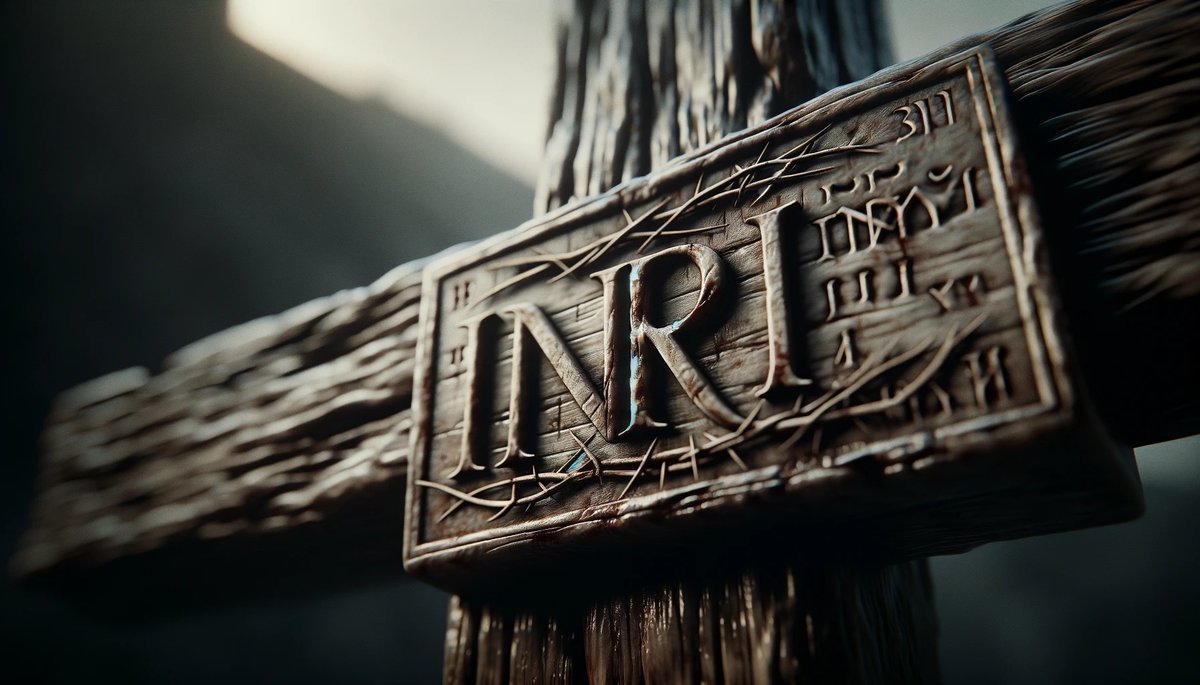Home>Theology and Spirituality>What Does The Cross Mean In Baptism


Theology and Spirituality
What Does The Cross Mean In Baptism
Published: February 29, 2024
Peter Smith, Editorial Director at Christian.net, combines deep insights into faith, politics, and culture to lead content creation that resonates widely. Awarded for his contributions to religious discourse, he previously headed a major organization for religious communicators, enhancing dialogue on faith's societal impacts.
Discover the significance of the cross in baptism and its theological and spiritual implications. Explore the deeper meaning behind this sacred symbol.
(Many of the links in this article redirect to a specific reviewed product. Your purchase of these products through affiliate links helps to generate commission for Christian.net, at no extra cost. Learn more)
Table of Contents
The Symbolism of the Cross in Baptism
The cross holds significant symbolism in the context of baptism. It represents the central aspect of the Christian faith and serves as a powerful symbol of spiritual transformation and rebirth. Here are some key aspects of the symbolism of the cross in baptism:
-
Sacrifice and Redemption: The cross symbolizes the ultimate sacrifice made by Jesus Christ for the redemption of humanity. In the act of baptism, individuals are immersed in water, symbolizing the cleansing of sin and the emergence into a new life, mirroring the sacrificial and redemptive aspects of Christ's crucifixion.
-
New Life and Rebirth: The cross represents the concept of new life and rebirth in the Christian faith. Through baptism, individuals publicly declare their faith in Christ and their commitment to living a new life in accordance with His teachings. The immersion in water and the subsequent emergence symbolize the death of the old self and the resurrection into a new life in Christ.
-
Unity with Christ: The cross serves as a symbol of unity with Christ and His suffering. In baptism, individuals identify with the death, burial, and resurrection of Jesus, signifying their union with Him in His death and their hope of sharing in His resurrection.
-
Victory Over Sin and Death: The cross symbolizes the victory of Christ over sin and death. Through baptism, individuals partake in this victory, acknowledging their freedom from the bondage of sin and their hope of eternal life through their faith in Christ.
-
Seal of Faith: The cross in baptism also serves as a seal of faith and a mark of belonging to the Christian community. It signifies the individual's initiation into the body of Christ and their commitment to living a life guided by the principles of the Christian faith.
In essence, the symbolism of the cross in baptism encompasses themes of sacrifice, redemption, new life, unity with Christ, victory over sin and death, and the seal of faith, all of which hold profound significance in the Christian faith.
Read more: What Does One Baptism Mean
The Historical Significance of the Cross in Baptism
-
Early Christian Practices: In the early centuries of Christianity, baptism was closely associated with the use of the cross. Historical records indicate that the sign of the cross was used in the administration of baptism as a means of invoking God's protection and grace upon the newly baptized individuals. This practice reflects the deep historical connection between the cross and the rite of baptism in the early Christian church.
-
Symbol of Faith and Identity: The historical significance of the cross in baptism also lies in its role as a symbol of faith and identity. In the early Christian community, the act of making the sign of the cross was a visible declaration of one's allegiance to Christ and His teachings. This symbolic gesture was closely intertwined with the baptismal rite, signifying the individual's commitment to embracing the Christian faith and living according to its principles.
-
Martyrdom and Persecution: The historical context of the cross in baptism is also linked to the early Christian experience of martyrdom and persecution. During periods of intense persecution, individuals who sought baptism understood the profound implications of publicly identifying with the cross. The act of being baptized in the name of the Father, the Son, and the Holy Spirit, while making the sign of the cross, carried immense significance as a courageous affirmation of one's faith, often at great personal risk.
-
Liturgical Development: Over time, the use of the cross in baptism became integrated into the liturgical practices of the Christian church. The sign of the cross was incorporated into the baptismal liturgy, serving as a visible and tangible expression of the spiritual realities being enacted through the sacrament. This historical development solidified the enduring connection between the cross and the sacrament of baptism within the Christian tradition.
-
Continuity and Tradition: The historical significance of the cross in baptism underscores the continuity and tradition of the Christian faith. Across diverse cultural and historical contexts, the use of the cross in baptism has remained a consistent and unifying element of Christian practice. This continuity reflects the enduring significance of the cross as a symbol of Christ's redemptive work and the foundational role of baptism in the life of the Christian community.
In summary, the historical significance of the cross in baptism is rooted in early Christian practices, its role as a symbol of faith and identity, its association with martyrdom and persecution, its integration into liturgical development, and its enduring continuity within the Christian tradition.
The Spiritual Meaning of the Cross in Baptism
The spiritual meaning of the cross in baptism delves into the profound significance of this symbol in the context of spiritual transformation and renewal. It encompasses the following aspects:
-
Symbol of Cleansing and Purification: The cross holds spiritual significance as a symbol of cleansing and purification in the act of baptism. Just as water is used to physically cleanse the body during baptism, the cross represents the spiritual purification and forgiveness of sins that individuals experience through their faith in Christ. It signifies the washing away of the old self and the emergence of a new, spiritually renewed life.
-
Emblem of Faith and Commitment: In the spiritual realm, the cross serves as an emblem of faith and commitment. When individuals undergo baptism, the cross symbolizes their unwavering faith in the redemptive work of Christ and their commitment to living a life that reflects His teachings. It signifies a deep spiritual allegiance to Christ and His message of love, grace, and salvation.
-
Sign of Spiritual Rebirth and Renewal: The spiritual meaning of the cross in baptism also encompasses the concept of spiritual rebirth and renewal. Through the symbolism of the cross, baptism represents a spiritual death to the old way of life characterized by sin and a resurrection into a new life of righteousness and holiness. It signifies the transformative power of God's grace at work in the lives of believers.
-
Expression of Divine Love and Sacrifice: The cross holds profound spiritual meaning as an expression of divine love and sacrifice. In the Christian faith, the cross is a powerful reminder of God's sacrificial love manifested through the death of Jesus Christ. In the context of baptism, the cross symbolizes the depth of God's love and the sacrificial nature of Christ's atonement, which becomes personally relevant to individuals as they publicly declare their faith through the sacrament of baptism.
-
Symbol of Spiritual Victory and Hope: Lastly, the spiritual meaning of the cross in baptism encompasses the idea of spiritual victory and hope. Through the cross, baptism signifies the victory of Christ over sin and death, offering believers the hope of eternal life and the assurance of God's redemptive plan for humanity. It serves as a beacon of hope and a source of spiritual strength for those who embrace the Christian faith.
In essence, the spiritual meaning of the cross in baptism encompasses themes of cleansing and purification, faith and commitment, spiritual rebirth and renewal, divine love and sacrifice, and spiritual victory and hope, all of which hold profound significance in the spiritual journey of believers.
The Cross as a Sign of Salvation in Baptism
-
Redemption and Salvation: The cross serves as a powerful sign of salvation in the context of baptism. It symbolizes the redemptive work of Jesus Christ, who, through His death and resurrection, provided the means for humanity's salvation. In the act of baptism, the cross becomes a visible representation of this salvation, signifying the individual's acceptance of God's grace and their entry into a new life of faith and discipleship.
-
Forgiveness of Sins: The cross in baptism is a sign of the forgiveness of sins. As individuals are baptized, the symbolism of the cross represents the atoning sacrifice of Christ, through which the forgiveness of sins is made possible. It signifies the cleansing of the soul and the restoration of a right relationship with God, marking the beginning of a journey of spiritual renewal and reconciliation.
-
Deliverance from Bondage: The cross as a sign of salvation in baptism also represents deliverance from the bondage of sin and the power of evil. Through the act of baptism, individuals publicly declare their liberation from the enslavement of sin and their embrace of the freedom found in Christ. The cross becomes a tangible emblem of this deliverance, symbolizing the victory of Christ over the forces of darkness and the promise of spiritual liberation for believers.
-
Entrance into the Kingdom of God: In the spiritual dimension, the cross signifies the individual's entrance into the kingdom of God. Through baptism, individuals affirm their faith in Christ as the Savior and acknowledge His lordship over their lives. The cross becomes a sign of their allegiance to the reign of God and their participation in the community of the redeemed, marked by the transformative power of God's salvation.
-
Hope and Eternal Life: The cross in baptism is a sign of hope and the promise of eternal life. It represents the assurance of God's redemptive plan for humanity and the hope of resurrection and eternal fellowship with God. As individuals are baptized, the cross serves as a beacon of hope, reminding them of the ultimate victory of Christ over death and the certainty of a future filled with the glory of God's eternal kingdom.
In summary, the cross as a sign of salvation in baptism embodies the themes of redemption and salvation, forgiveness of sins, deliverance from bondage, entrance into the kingdom of God, and the hope of eternal life. It stands as a powerful symbol of God's saving grace and the transformative impact of the gospel in the lives of believers.
The Cross as a Symbol of Christ's Sacrifice in Baptism
-
Redemptive Atonement: The cross, as a symbol of Christ's sacrifice in baptism, embodies the concept of redemptive atonement. It serves as a tangible reminder of Christ's sacrificial death on the cross, through which the sins of humanity were atoned for. In the act of baptism, the symbolism of the cross signifies the individual's identification with Christ's atoning sacrifice, acknowledging the profound impact of His death in reconciling humanity to God.
-
Substitutionary Atonement: The cross in baptism symbolizes Christ's substitutionary atonement, wherein He took upon Himself the sins of the world. As individuals are baptized, the cross becomes a visual representation of this substitutionary act, signifying their acceptance of Christ's sacrificial offering on their behalf. It underscores the fundamental Christian belief that through Christ's sacrifice, believers are granted forgiveness and reconciliation with God.
-
Exemplification of Love: The cross as a symbol of Christ's sacrifice in baptism exemplifies the depth of God's love for humanity. It represents the ultimate expression of divine love, as demonstrated through Christ's willingness to endure the agony of the cross for the sake of humanity's redemption. In the context of baptism, the cross becomes a poignant symbol of this selfless love, prompting individuals to respond with gratitude and devotion to God's redemptive grace.
-
Victory Over Sin and Death: The cross signifies Christ's victory over sin and death, achieved through His sacrificial death and subsequent resurrection. In the act of baptism, the symbolism of the cross represents the individual's participation in this victory, acknowledging their liberation from the power of sin and their hope of sharing in Christ's triumph over death. It serves as a powerful emblem of the transformative impact of Christ's sacrifice in the lives of believers.
-
Call to Self-Sacrificial Living: The cross in baptism also serves as a call to self-sacrificial living in imitation of Christ. As individuals publicly declare their faith through baptism, the cross becomes a symbol of their commitment to living lives characterized by selflessness, compassion, and sacrificial love. It signifies their willingness to embrace the values exemplified by Christ's sacrifice and to embody His self-giving nature in their interactions with others.
In essence, the cross as a symbol of Christ's sacrifice in baptism embodies the themes of redemptive atonement, substitutionary atonement, the exemplification of love, victory over sin and death, and the call to self-sacrificial living. It stands as a powerful reminder of Christ's redemptive work and the transformative impact of His sacrifice in the lives of those who embrace the Christian faith.















